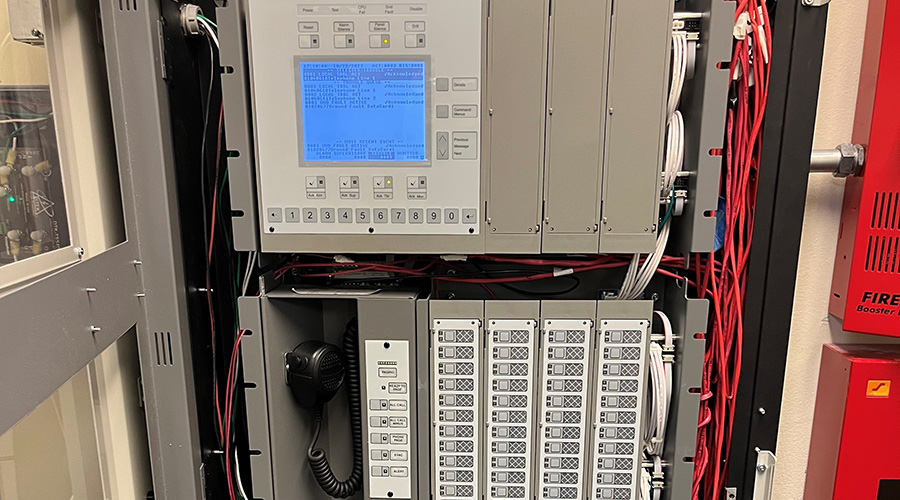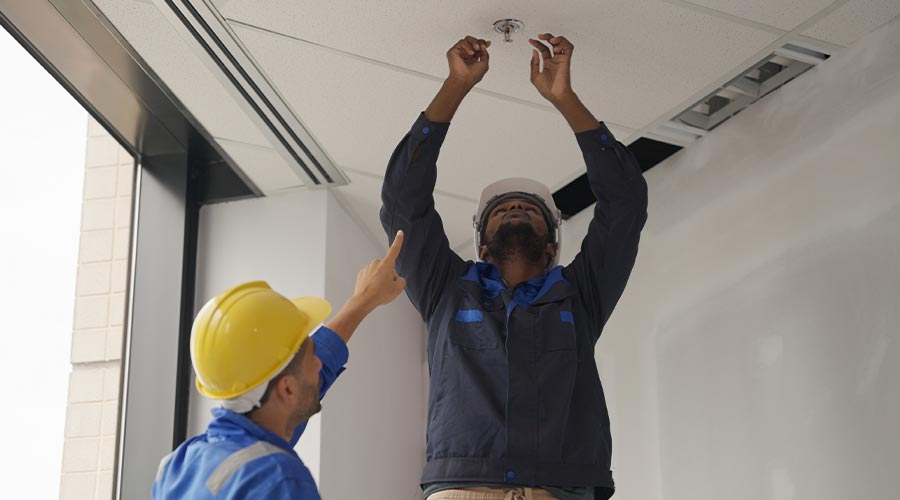Out-of-Sight Fire Hazards
Neglected wires lurking in facilities can create the potential for deadly fires
Depending on the size, use and age of a typical institutional or commercial facility today, it can include thousands or even tens of thousands of feet of cable. And a good percentage of that cable has been abandoned. Lift any acoustical ceiling panel or inspect any riser system or telecommunications closet, and the chances are very good that abandoned cables — lots of abandoned cables — will turn up.
Traditionally, as with many other elements in facilities, abandoned cables have been largely ignored — out of sight, out of mind. But that attitude is changing rapidly. Abandoned cables, particularly those found in ceilings and walls, are increasingly viewed and treated as a major fire-safety concern.
Fire Concerns
Consider the typical communications cable that might be installed in a building. A significant portion of the weight of that cable is in the form of plastic insulation and jacking material that surrounds the copper wiring. Here is the fire hazard: In the event of a fire, these materials can both fuel and spread the fire in a concealed space.
Smoke produced by these materials contains toxins. Older-generation cables and wires are the worst culprits. But even newer cabling that adheres to standards regarding smoke and flame spread can be a problem, given the sheer volume of cabling found in many buildings.
Recognizing the extent and the seriousness of this issue, the National Electrical Code (NEC) now requires the removal of all accessible abandoned copper and fiber cable from the buildings. Unused cables can remain as long as they are identified with a “for future use” tag.
Depending on the age and the building’s past use, these requirements typically create three major problems for maintenance and engineering managers:
-
identifying all wiring that is not being used
-
removing it
-
Determining who pays for carrying out this work.
Identification
The only practical way to identify wiring that is not being used within a building is to conduct a comprehensive wiring survey or audit. The survey will take time and effort, but if it is performed properly, it will identify the extent of the problem and, even more importantly, the level of effort that will be required to correct it.
When the survey is complete, all cabling within the facility will fall into one of three categories:
-
in use
-
tagged for future use
-
abandoned.
The survey will need to examine all areas in which cabling has been installed in the facility. The process should start with a survey of all telecommunications and computer equipment closets.
Typically, inspectors will find that as the equipment in these areas has been updated, older, incompatible cabling has been abandoned in place. the inspector should tag as abandoned all cable that will not be reused in the near future.
The next step is to examine the cabling that is installed in building raceways and risers. It is not uncommon, particularly in older buildings, to find that a significant percentage of the cabling in these areas has been abandoned and is taking up much-needed capacity.
Finally, the inspector should take a look at cabling that is installed above drop ceilings and below raised floors. Here, too, it is not uncommon to find a large amount of abandoned cable.
Removal and Disposal
The best and easiest time to remove abandoned cables is during the addition of new cabling systems or during building renovation projects. Removing abandoned cable at these times minimizes the disruption to building occupants, and it helps free capacity for newly-installed cables.
With enforcement of the NEC requirements for abandoned cable removal on the rise, failure to remove abandoned cables during a renovation project might trigger an enforcement action, which in turn could delay completion of the project.
Managers have the option of either removing the abandoned cables themselves or contracting for their removal with a firm that specializes in cable removal. These companies will handle all steps in the process, from set up to disposal of the removed cables.
If a manger decides to remove the cables using in-house personnel, a number of readily available tools can easily and quickly separate cable insulation and jackets from copper and aluminum wiring. The stripped wire then can be sold to a recycling company, where it is sent for smelting or re-refining.
Costs vary widely with the market demand for copper and aluminum. If the insulation and cable jackets have not been removed, the going rate is about one-half of that for stripped wire.
Even the insulation and cable jackets can be recycled. Burning, once an accepted method of removing insulation and cable jackets, should not be a consideration, due to the possible generation of toxic smoke and fumes.
Responsibility
One of the biggest problems that managers face when dealing with abandoned cables is determining who is ultimately responsible for their removal. Even in relatively new buildings, managers might have seen a significant amount of tenant turnover.
Typically, tenants install the cabling that is required to support their operations while abandoning all previously installed cables. Unless the lease spells out the responsibility for removing the cabling, the responsibility and the cost for its removal falls on the owner.
Managers should take a close look at all leases and license agreements between the organization and tenants, telecommunication companies, and information and cable service providers.
In most cases, a lease will not address the issue of removal of inside wiring to be abandoned. It would be worthwhile to review and revise these existing contracts, as well as all future contracts.
Catching Up, Getting Ahead
One thing is certain: Unless managers address the issue of abandoned cables in their buildings as soon as possible, it will only get worse. The need for cabling in buildings is accelerating, and there no guarantee that tomorrow's computer, telecommunication, and building systems will be able to use the cabling systems that already are installed.
Managers can take several steps today to minimize the future impact of abandoned cables and wires.
They must make it a requirement that when occupants update or replace systems, they must remove all old cabling systems. All leases with tenants and service providers must require removal of abandoned cables.
While the initial building survey will help to identify abandoned cables that must be removed, managers also will need to schedule subsequent follow-up surveys, conducted on a regular basis, as a method of ensuring that tenants and service providers are adhering to the lease requirements of their.
When new buildings are planned or when renovation projects are initiated for older buildings, managers should consider installing cable raceways wherever possible. Raceways make it relatively easy to remove and replaced cables while minimizing disruptions to building occupants. Managers can no longer assume that abandoned cables are an out-of-sight and out-of-mind issue.
James Piper is a national consultant based in Bowie, Md. He has more than 25 years of experience with facilities maintenance management issues.
Related Topics:











